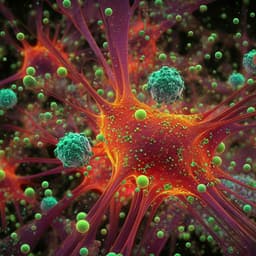
Medicine and Health
Single cell sequencing reveals endothelial plasticity with transient mesenchymal activation after myocardial infarction
L. S. Tombor, D. John, et al.
This groundbreaking study conducted by authors from the Institute for Cardiovascular Regeneration and The Jackson Laboratory uncovers how endothelial cells respond to myocardial infarction. Discover the unexpected time-dependent changes in cell behavior that promote vascular regeneration—a process that could redefine recovery after cardiac events.
Playback language: English
Related Publications
Explore these studies to deepen your understanding of the subject.







